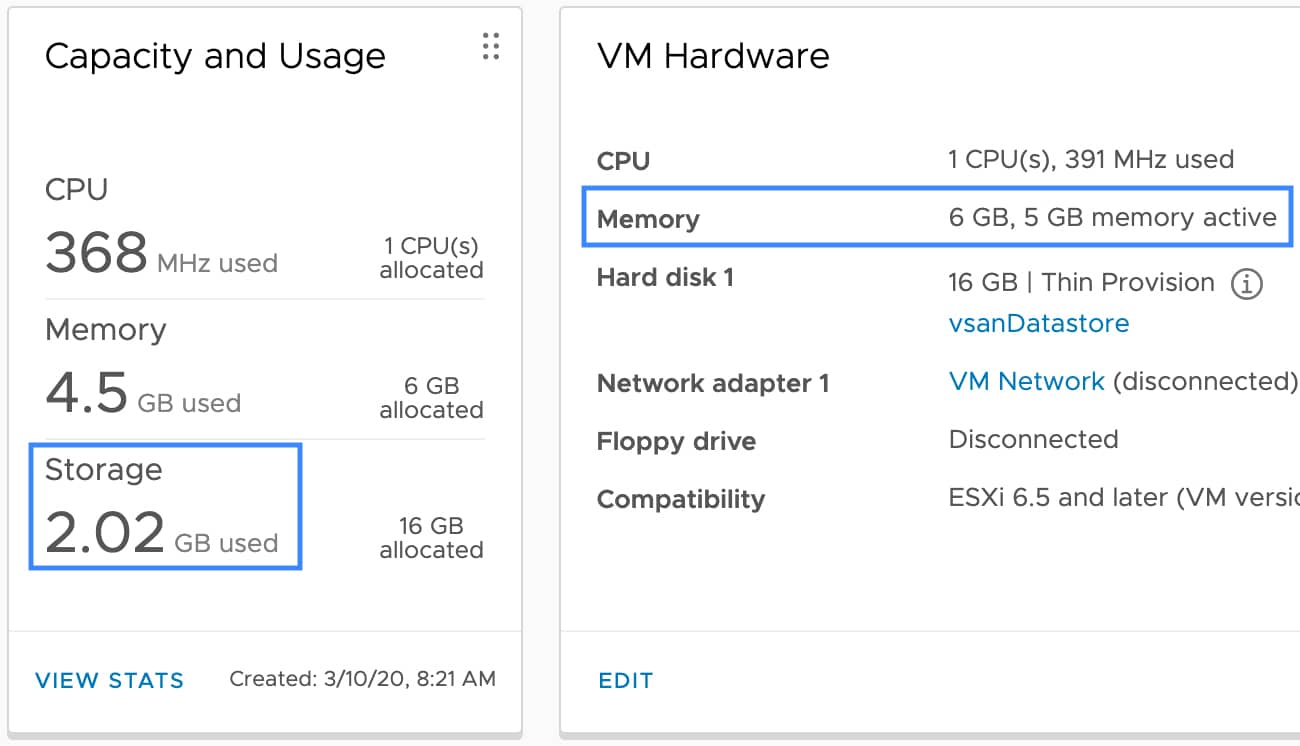This week, with the newest release of VMware vSAN version 7, VMware brings two essential enhancements to the vSAN capacity monitoring: Improvements to virtual machine consumption metrics and vSphere Replication object reporting. VMware says that these new capacity reporting features are intended to assists administrators make decisions to add capacity to existing hosts in a vSAN cluster (scale-up). Moreover, admins might have to add hosts to a vSAN cluster (scale-out) and revisit the storage policies assigned to the VM objects. Changes to storage policies can also impact capacity usage. VMware adds that for any of these cases, accurate reporting is essential to ensure an organization continues to run without disruption.
This week, with the newest release of VMware vSAN version 7, VMware brings two essential enhancements to the vSAN capacity monitoring: Improvements to virtual machine consumption metrics and vSphere Replication object reporting. VMware says that these new capacity reporting features are intended to assists administrators make decisions to add capacity to existing hosts in a vSAN cluster (scale-up). Moreover, admins might have to add hosts to a vSAN cluster (scale-out) and revisit the storage policies assigned to the VM objects. Changes to storage policies can also impact capacity usage. VMware adds that for any of these cases, accurate reporting is essential to ensure an organization continues to run without disruption.
Storage admins know that running out of free space is a big concern for any storage or HCI platform. VMware vSAN requires free space to handle momentary operations such as snapshots, policy changes, and host maintenance. VMware vSAN 7 enhancements are induced to help avoid these concerns. The first enhancement, Virtual Machine Capacity Consumption Reporting, vSAN 7, considers the raw space consumed by the namespace folder, VM home. This folder includes configuration files, log files, and more, and coexists with other objects that belong to a VM such as virtual disks (.vmdk), snapshots, and swap files (.vswp). Swap files, in particular, during many powered-on virtual machines, can consume and report a significant amount of storage, even though they are thin-provisioned. Now, vSAN 7, from the VM and capacity and usage stats, provides more accurate reporting of the actual capacity consumed by these thin-provisioned objects.
VMware highlights that vSphere and vSAN admins should always remain aware of capacity management and reporting. With the second enhancement, vSphere Replication object reporting, the vSAN 7 capacity view now shows how much space is consumed. Space reporting for these objects are shown in a dedicated section under “User Objects.” This new option provides a more granular report of space consumed by replicated data on a vSAN datastore, VMware states.
Engage with StorageReview
Newsletter | YouTube | Podcast iTunes/Spotify | Instagram | Twitter | Facebook | RSS Feed

